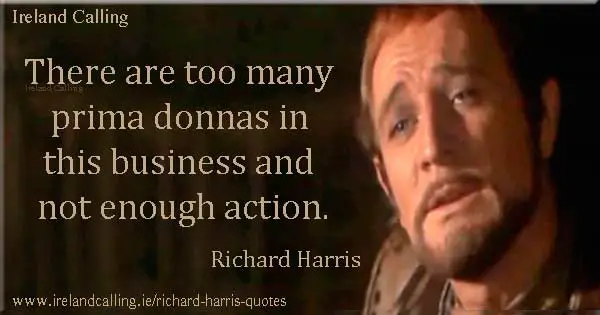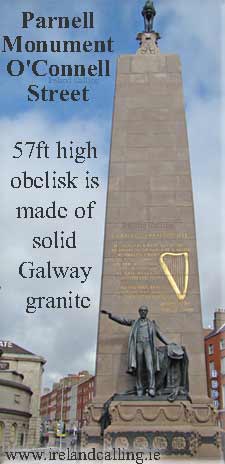 1911 A statue of Charles Parnell was unveiled on O’Connell Street in Dublin on this day in 1911.
1911 A statue of Charles Parnell was unveiled on O’Connell Street in Dublin on this day in 1911.
Parnell had been one of Ireland’s leading politicians of the 19th century. He campaigned for Irish Home Rule and had the respect of his peers in both Britain and Ireland.
His political career was cut short when he became romantically involved with Kitty O’Shea, the wife of one of his fellow MPs.
Parnell refused to hide the affair and ended up marrying O’Shea, but the cost was his own party turned against him and his career was left in tatters.
Parnell died a short time later from a heart attack.
The statue was unveiled to recognise Parnell’s achievements, and his career of work for the Irish cause. It is still a popular attraction in Dublin, with thousands of tourists posing for a photograph with it each year.
Read more about the tragic love story of Charles Parnell and Kitty O’Shea
Read about some of the top tourist attractions in Dublin
* * *
1925 Brendan O’Dowda was born in Dundalk on this day in 1925. He was a popular tenor, and played a major part in popularising much of the work of Irish songwriter Percy French. O’Dowda was a popular performer in Ireland, Britain and America for 1950s and 60s.
Click here to read about more popular Irish singers
Click here to read more about Percy French and his work
* * *
1930 Actor Richard Harris was in Limerick. His best known role is probably King Arthur in the 1967 film Camelot. He was also Albus Dumbledore in the first two films in the Harry Potter films. He lived life to the full, as this quote suggests. He never had regrets.

* * *
1950 Happy birthday to Derek Briggs, born in Ireland on this day in 1950. He is one of the world’s leading palaeontologists, and is credited for his work on the study of the Burgess Fauna, a collection of fossils in Canada.

Briggs was educated at Trinity College, Dublin before going on to complete his studies at Cambridge University in England. He has since become the Director of the Yale Peabody Museum of Natural History, and the G. Evelyn Hutchinson Professor of Geology and Geophysics at Yale. Briggs is regarded by his peers as one of the leading palaeontologists in the world.
* * *
1974 Happy birthday to Keith Duffy, born on this day in Dublin in 1974. He was a member of the chart topping Irish boyband Boyzone. The group had countless hits such as No Matter What, Father and Son and Baby Can I Hold You Tonight.
The band split in 2000 and Duffy pursued a career in acting. He landed a role in British soap opera Coronation Street and proved a popular addition amongst viewers. He re-joined his former bandmates in 2008 when Boyzone reformed.
Duffy has also appeared in various game shows and reality TV programmes. He has spoken honestly about his choice to go into reality TV, admitting he was motivated by a lack of cash after losing money on a series of bad investments during the recession.
Read about more Irish bands
Read Duffy’s open and philosophical attitude about entering into reality TV for the cash
* * *
1979 On the final day of his visit to Ireland, Pope John Paul II celebrated mass with more than 400,000 people in Limerick, plus millions more watching on television.

Nearly the whole country had seen the Pope during his three-day visit. It was estimated that a combined total of nearly three million people attended one of the five public appearances he made.
Shortly after the mass in Limerick, he departed from Shannon airport on a flight to Boston.
* * *
2001 More than 1500 people lined the streets of Lurgan, County Armagh to attend the funeral of Martin O’Hagan on this day in 2001. He was an investigative journalist who was assassinated for publishing details about the activities of the Loyalist Volunteer Group.
O’Hagan was raised a Roman Catholic and had a deep hatred for the sectarianism in Northern Ireland. He married a Protestant woman and they had three daughters.
O’Hagan often printed personal profiles of high ranking members of both the IRA and the UVF. He would describe the men in great detail, up to the places they frequented, the business dealings they were involved in and the cars they drove. He would not name the men in his articles, but cryptically leave clues for the reader to work out the identity of who he was describing.
He was kidnapped and interrogated by the IRA in 1989, after he had published details about an assassination. The IRA believed there had been an inside leak and quizzed O’Hagan about the sources for his report. He expected to be killed but was released unharmed. Following this ordeal he moved to Cork for several years but ended up returning to County Armagh.
O’Hagan continued to investigate and expose major criminals and paramilitary leaders. He was intercepted by a known loyalist on his way home from his local pub one evening and warned that he was being watched.
A few weeks later he was walking home from the same pub with his wife when a car pulled up alongside them. O’Hagan pushed his wife into a hedge but was shot himself several times by a gunman in the car. His wife rushed to call an ambulance but by the time she returned to him he had died.
The Red Hand Defenders, an extremist strand of the Loyalist Volunteer Force, took responsibility for O’Hagan’s killing. As yet, no one has been convicted of the murder.
* * *
